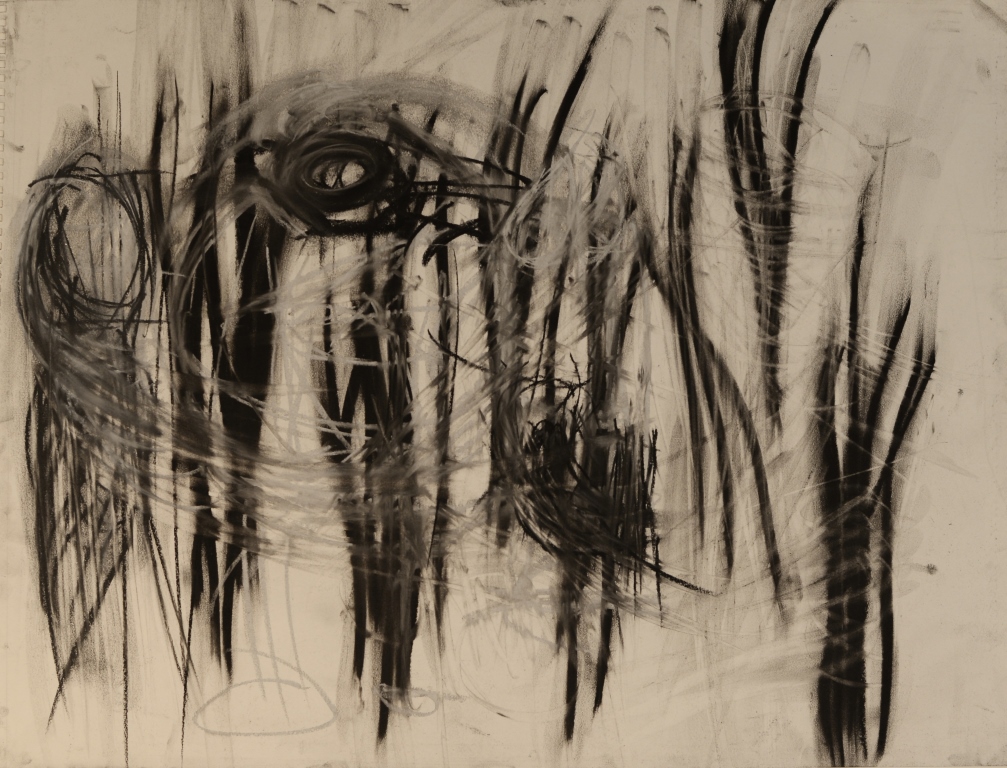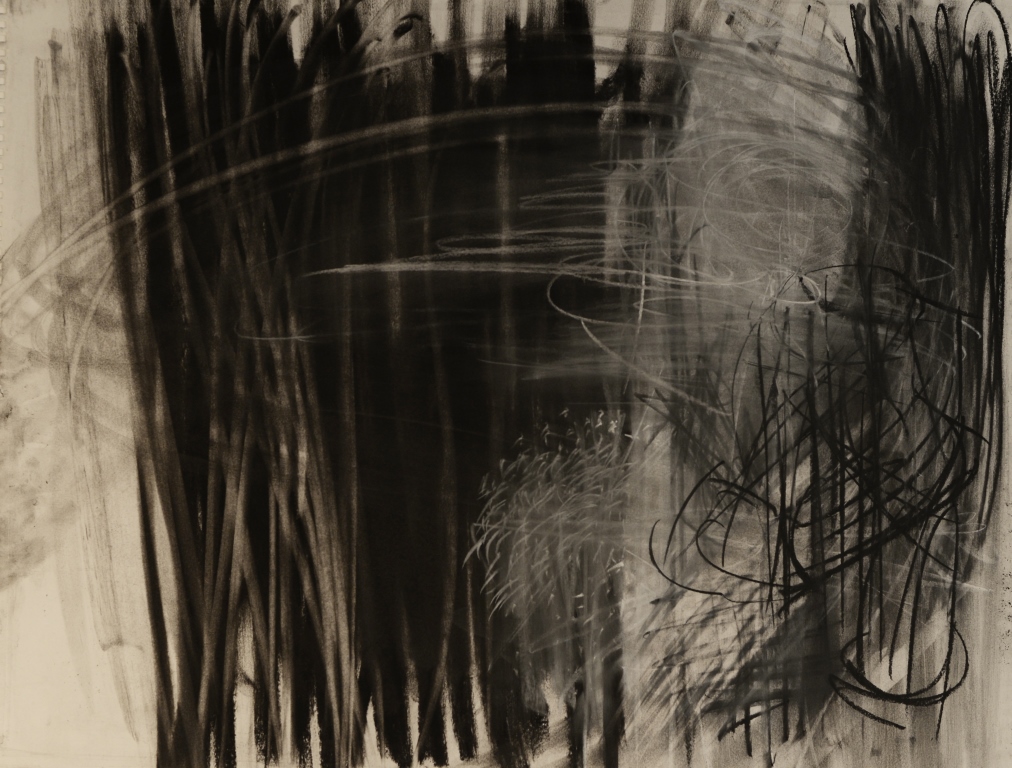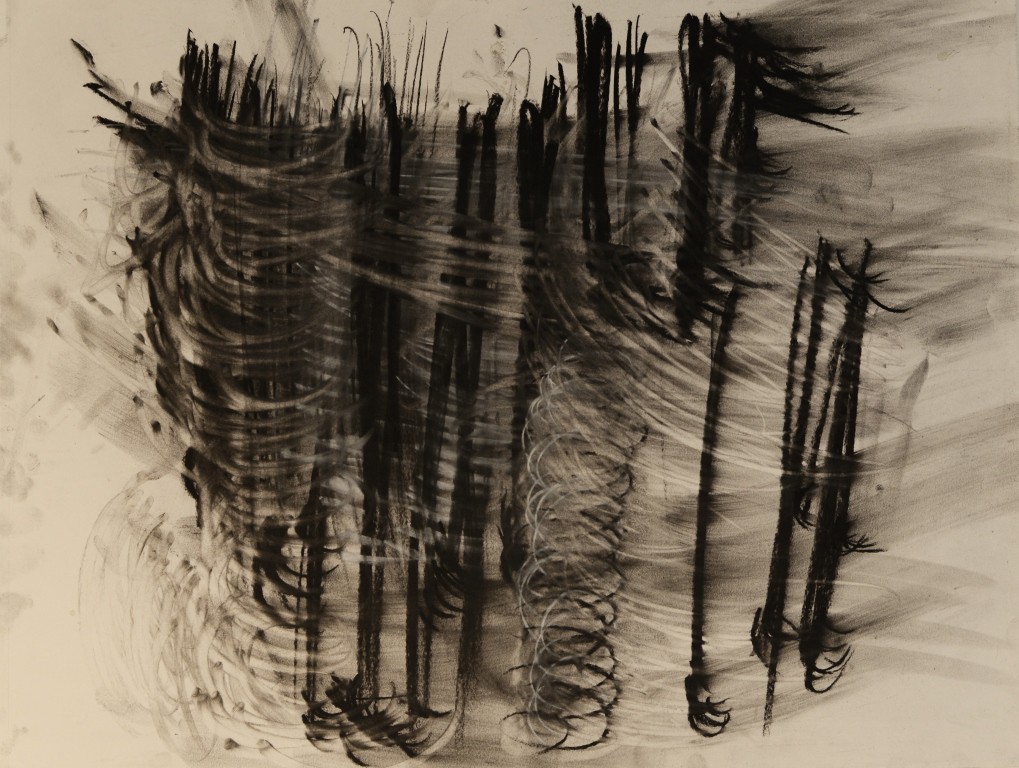A Record of the Hand
Rollin Marquette’s new drawings are not studies or plans for specific sculptures. They are more broadly generative and, at once, more particularly drawings, in and of themselves, the latest example of his deep and persistent concern with the powerful and perplexing nature of dichotomy.

Everyone draws. Drawing has been a foundation of the Western art tradition for centuries. Painters sketch compositions and make observational studies. Architects build ideas in two dimensions before and during the making of structures. Sculptors, too, make sketches for works in early stages of becoming. As scholar Erika Naginski has noted about the thoughts of the maker of some of the most well known drawings ever made, Leonardo da Vinci: “[Leonardo understood drawing] to be a part of a process which is constantly going on in the artist’s mind; instead of fixing the flow of imagination it keeps it in flux.”[1]

Drawing is therefore more than preparatory sketching. The works in Rollin Marquette’s Light and Dark are not studies or plans for specific sculptures. They are more broadly generative and, at once, more particularly drawings in and of themselves.
The Light and Dark drawings are the latest example of Marquette’s deep and persistent concern with the powerful and perplexing nature of dichotomy. Defined as a division into two — especially mutually exclusive or contradictory — groups or entities, the very idea of dichotomy is fraught with light and dark implications: the one and the other/the one or the other. Dichotomy can promote equality. It can also divide and obliterate.

Setting a table for himself in his studio, over a number of months the artist placed two sheets of paper side by side on a table. He worked on marking the sheets over the same time period, moving back and forth between them as it felt right, constantly checking one against (and with) the other. As a model, such comparative energy allows for new ideas and solutions to emerge. It can also implode on itself.
The dichotomy of light and dark has been a dynamic and incendiary concept in human history. With these drawings, Marquette adds a new layer to his overall engagement with balance and collapse as positive and negative forces in art and in life. The representations in the series taken together reveal a record of the hand and mind in constant struggle with and for, at once, resolution and implosion. The acceptance and even celebration of stability and ruin is a hallmark of the artist’s work in both three and two dimensions. In keeping with da Vinci’s concept of drawing’s role as supporting the flow, and not the fixing, of the imagination, Marquette’s drawings both add to and stand alone from his impressive body of sculptural work and allow us again to witness a marvelously active and critical imagination at work.
Related exhibition information:
Rollin Marquette: Light and Dark is on view at Space 369, a gallery space codirected by Nathaniel Flink and Julie Buffalohead, in the Dow Building at 2242 University Avenue, St. Paul. The exhibition opening is November 13, from 6 pm to 10 pm, and Marquette’s drawings will be on view by appointment thereafter through November 30, 2015.
Diane Mullin is Senior Curator at the Weisman Art Museum at the University of Minnesota. Her curatorial work focuses on modern and contemporary art.
[1] Quoted in The Drawing Book: A Survey of Drawing the Primary Means of Expression edited by Tania Kovats (London: Black Dog Publishing, 2005), 15.